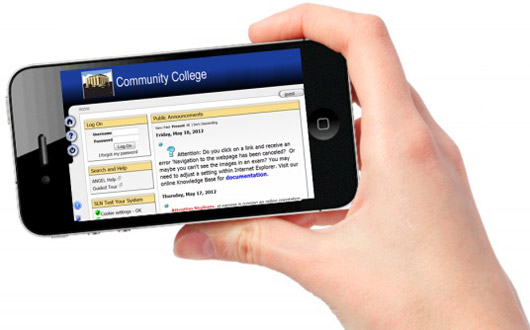Digital literacy is gaining importance as a key skill in every discipline and profession. Smartphones like the iPhone and Android devices have become a hotbed of innovations. With impacts on virtually every aspect of daily life, mobile technologies can greatly enhance learning experiences. Internet-connected mobile devices with embedded sensors, cameras, and GPS are bringing unprecedented possibilities to education.
Statistics from the mobile app marketplace reflects an expanding world of resources that fits into the palm of a hand. Thus, in March 2012 Apple announced about more than 25 billion downloaded apps from its App Store by the users of the more than 315 million iPhone, iPad, and iPod touch devices worldwide. The App Store offers more than 550,000 apps to users in 123 countries around the world, with more than 170,000 native iPad apps available. Customers can choose apps from a wide range of categories, including business, education, games, news, sports, health & fitness, travel, and more.
Google Play Store (formerly Android Market) has also hit a major milestone in app downloads from its site. It has sold 15 billion apps.
According to Juniper Research, consumer app downloads to mobile devices are expected to reach more than 66 billion per annum by 2016. This number scratches the surface of the anticipated growth of mobile applications.
The increasing availability of network access, growing capabilities of mobile devices, advances in electronic data flow together with the convergence of search technology, and location awareness makes mobile applications a powerful tool in the learning process.
Education institutions are seeing mobile apps not just as an affordable solution for learning, but also as a feature-rich tool for lab work, often replacing expensive and cumbersome devices and equipment. The leading universities, including Stanford, Yale, Oxford, and UC Berkeley, as well as colleges have already deployed their own apps.
To name a few selections, mobile apps can embrace the following features:
- Campus directory, maps, and virtual tours;
- Transportation information;
- Course lists;
- Digital distribution of course materials;
- Dining locations, hours of service, and menus;
- Sports schedules;
- Updates on interesting events and breaking campus news;
- Possibility to check grades;
- Access to library resources and digital textbooks.
The abundance of resources and relationships easily accessible via the Internet is increasingly challenging the educational environment. Students expect to be able to learn and study whenever and wherever they want to. More and more institutions around the world begin to understand the potential of mobile access, and they are investing in software that extends learning outside of the classroom.
Industries and Technology Areas:
Industries: education, eLearning
Technology Areas: mobile application development, software development, iOS, iPhone, iPad, iPod touch, Android, BlackBerry, Windows Phone











